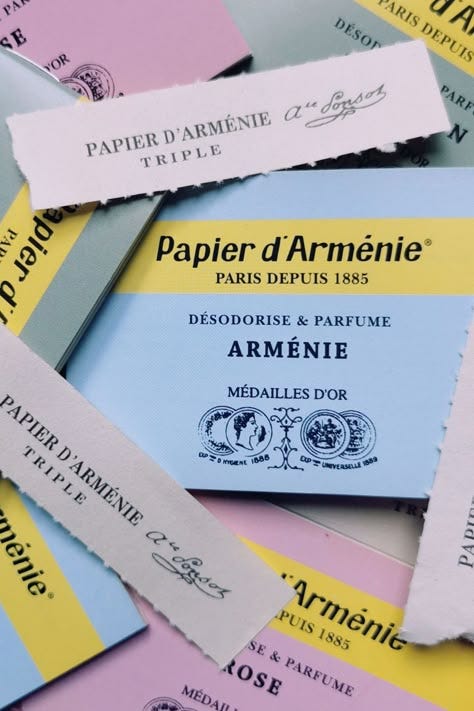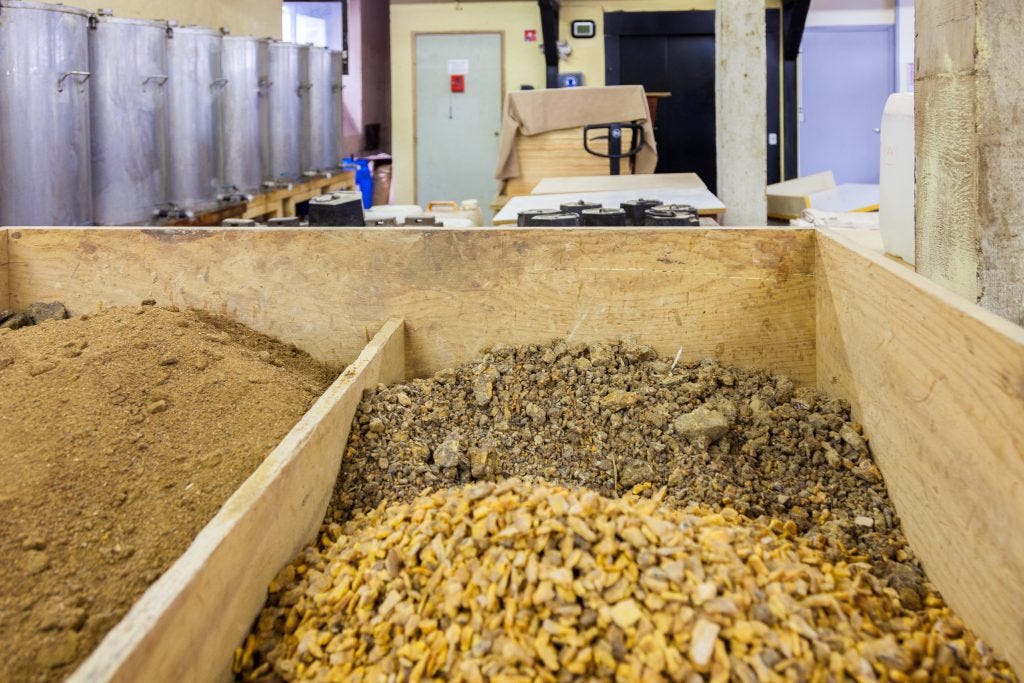Whenever I’m in France, I know I must pay a visit to a local pharmacy. Not because I’m sick when I travel, but because of the delights that are sold in them. And every time I go into one, there is an item I always see for sale, usually on or close to the counter: Papiers d’Arménie.
I wanted to find out more about these mysterious (to me) papers, so I went down a rabbit hole of history to find out a little more about them.
Papiers d’Arménie are little scented papers that come in a booklet or carnet in French. They look like something from another era, something your French grandmother would use. But because they are still sold in pharmacies today, I figure there must be enough of a demand to keep them on the shelves, even though — to me — they seem rather old-fashioned.
The inspiration
In the 19th century, a French chemist named Auguste Ponsot traveled to Armenia. There he noticed the locals burning some kind of resin to deodorize and freshen up the air in their homes. It turned out to be benzoin resin, which is found in perfumes and skincare. It’s derived from a specific genus of plants and trees that are found around the world.
Ponsot returned to France and told fellow pharmacist Henri Rivier what he discovered. With some experimentation, they found that benzoin resin could be dissolved in alcohol at a high temperature and infused as a scent onto a thin blotting paper. They then took the blotting paper and designed a little booklet that had small tear-out strips that could be folded and burned to release the cleansing scent. When the paper was burned (safely), it created a scent that had touches of vanilla and wood. A sort of incense.
A timeless household product
The two men introduced the papers to the world at a Paris health expo in 1888 and at the Universal Expo in 1889 (the same year the Eiffel Tower was unveiled). It was marketed as something that could disinfect a household. Look at the poster at the top of this article and you’ll see the advertisement implies that the Papiers d’Arménie have an ability to ward off diseases like cholera, smallpox, and typhoid. However, there was no evidence to support that claim.
That didn’t stop French consumers from buying the Papiers d’Arménie, which became a staple in many French households. Back then, they were sold in pharmacies and at épiceries fines, or fine-food stores.
On a recent trip to Paris, I purchased a booklet of Papers d’Arménie just to see what all the fuss is about. There are a number of scents to choose from: Rose, Arménie, and Tradition. The one I tried was Tradition. How did it smell? Well, just as I imagined, it smells like something a grandmother would burn in her house to freshen it up. It has a lightly perfumed odor that almost - almost - smells like baby powder, but musky.
Still in business
The company that produces Papiers d’Arménie is still around today and continues along its founders’ bloodlines: it’s run by the great-granddaughter of Henri Rivier. It imports the resin from Laos and the (recyclable) paper from Sweden. Apparently, it takes six months for a booklet to be ready for sale because the process of maturing the scent takes that long.
The papers are produced at a factory in Montrouge on the southern outskirts of Paris — 15,000 little booklets are churned out daily, with 2.5 million old every year. The booklets are apparently sold in places like Japan, South America, Africa, and the U.S. (though I have yet to see them there myself). This is one thing I appreciate about France — that small companies like this can still exist, even though everything is so (sadly) globalized today.
Sources:
Article: The Secret of a 'Made in France' Product (in French)










I've never, ever, noticed these or even heard of them. Now that I've (finally) read this, I'll have to check them out and see if my husband knows of them. I loved the information about the company! Another great subject, as usual.
My French mother-in-law (who’s in her mid-70s) burns it regularly! So interesting to learn the history and know that it’s made so close by in Montrouge. I wonder if they do factory visits…